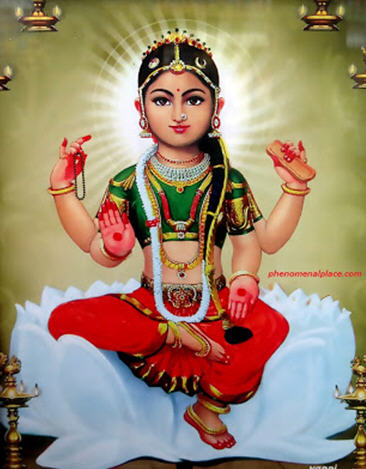It is narrated that Madurai was originally a forest known as Kadambavanam. One day, a farmer named Dhananjaya who was passing through the forest, saw Lord Indra (The king of the gods), worshipping a swayambhu (self createdLingam ) under kadamba tree. Dhananjaya, the farmer immediately reported this to King Kulasekara Pandya. Kulasekara Pandya cleared the forest and built a temple around the Lingam. A city was soon planned with the temple as its centre. On the day the city was to be named, Lord Shiva is said to have appeared and drops of nectar from his hair fell on the town. So, the place was named Madurai – mathuram meaning “sweetness” in Tamil.
Madurai has a rich historical background in the sense that Lord Shiva himself performed sixty-four wonders called “Thiruvilaiyadals”.
After King Kulasekara Pandyan had already build a small temple with the Lingam which is now referred to as Lord Sundarar. His son, Malayadhwaja Pandyan became the next King of the Pandyanempire.
For years, Malayadwaja and his consort Kanchanmala were unable to conceive any children. In attempts to beget a child, Malaydwaja conducted many Vedic sacrifices. Finally, in the middle of one such ritual, a three-year-old girl with three breasts emerged from the flames and sat on Kanchanmala’s lap. The girl in fact was Goddess Parvati, who had taken birth as Kanchanmala’s daughter in response to a prayer of hers in her past life.
In fact, Malayadwaja was a bit sad that he was not blessed with a son. But suddenly he heard a disembodied voice tell him that he should name the girl “Thadathangai” and to raise her as if she was were a son. The voice ensured Malayadwaja that Girls third breast would be absorbed back into her body when she first cast her eyes on the man who would become her husband—i.e Lord Shiva.The fish-eyed baby also never blinked her eyes, which was later thought of as “always keeping a careful eye on Madurai”. For this reason, Madurai is also called “Thoonganagaram” which means “The city that never sleeps”.
Malaydwaja obeyed the divine command. He named Thadathangai his successor and taught her the art of war. After Malayadwaja’s death, Thadathangai ascended to the throne. She was the beloved of the people and came to be known as “Meenakshi”—the one with fish-like eyes. Meenakshi embarked on a dig-vijaya, a military campaign of victory across the length and breadth of India. After numerous victories on earth, Meenakshi attacked Mount Kailash, the abode of Lord Shiva. She defeated all the soldiers and generals of the Lord. Seeing this, Shiva himself came to fight the undaunted queen. But as soon as Meenakshi saw the Lord, the prophecy of her youth bore fruit: she instantly fell in love with him and her third breast went back inside her body.
Shiva directed Meenakshi to return to her home city, promising her that he would join her in eight days as her bridegroom. And this is exactly what happened. They were married in Madurai with Lord Vishnu himself giving away Meenakshi to Shiva.
Meenakshi Kalyanam (the marriage of Meenakshi with Shiva) is celebrated annually to this day. According to the Sthalapurana, Meenakshi and Lord Shiva ruled over the city of Madurai for a long time appearing as of human.

It is said that the Lord Shiva performed several miracles during his wedding. There was nothing on the side of the bridegroom’s party to match the regal splendour of the preparations made for his marriage; the story goes that on the wedding day, much to the astonishment of all, Lord Sundareshwara, the bridegroom came only with a dwarf named “Gundodhara’. Meenakshi, with a view to show her husband that she was very rich and powerful than him, haughtily remarked that the grand wedding arrangements would go waste since the bridegroom had not brought with him a large retinue befitting the occasion. Sundareshwarar said that it would be sufficient if they would be able to feed the dwarf brought with him. To the amazement of all, everything that Madurai could produce in shape of things to eat and drink was not enough to satisfy appetite of Gundodhara. Gundodhara quickly consumed both cooked and uncooked things and started asking for more. When there was nothing else left to eat, the dwarf began to cry for water to quench his thirst. All the water in the wells reservoirs of the city had gone in the same way as the food. Sundareshwarar then directed a flow of water from his matted hair which is said to be Vaigairiverand by drinking this the dwarf was satisfied.
This wonderful theme has been taken by the South Indian artists to create superb sculpture and paintings. They have found the marriage of Shiva and Parvathi a traditional source of inspiration. The celebrated poem Tiruvilayadal Puranam describes that Sundara Pandya and his queen ruled the kingdom as mortal kings. In course of time, they got a son who was named Ugra Pandya, later on to be called as Lord Muruga. After crowning their son to take over the kingdom, they revealed their real identities as Lord Sundareshwara and Goddess Meenakshi.